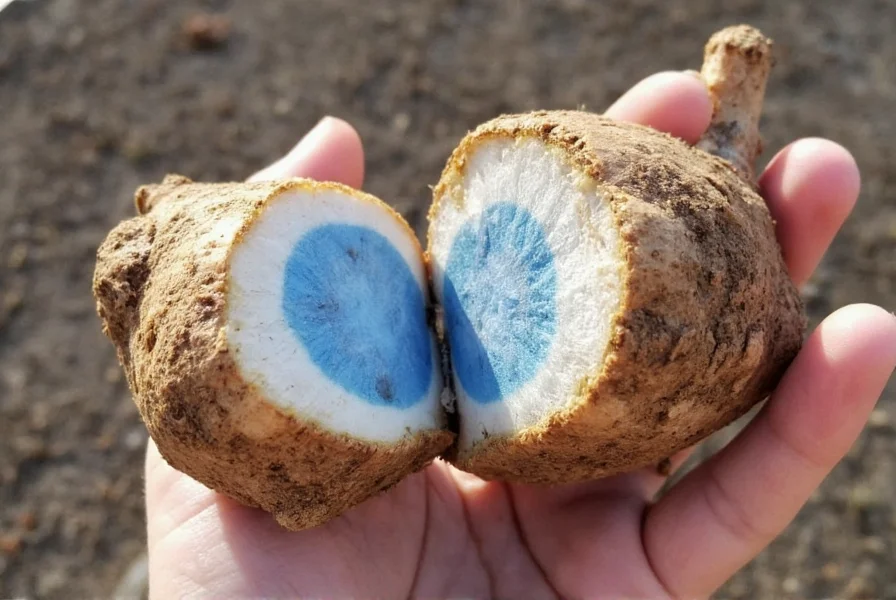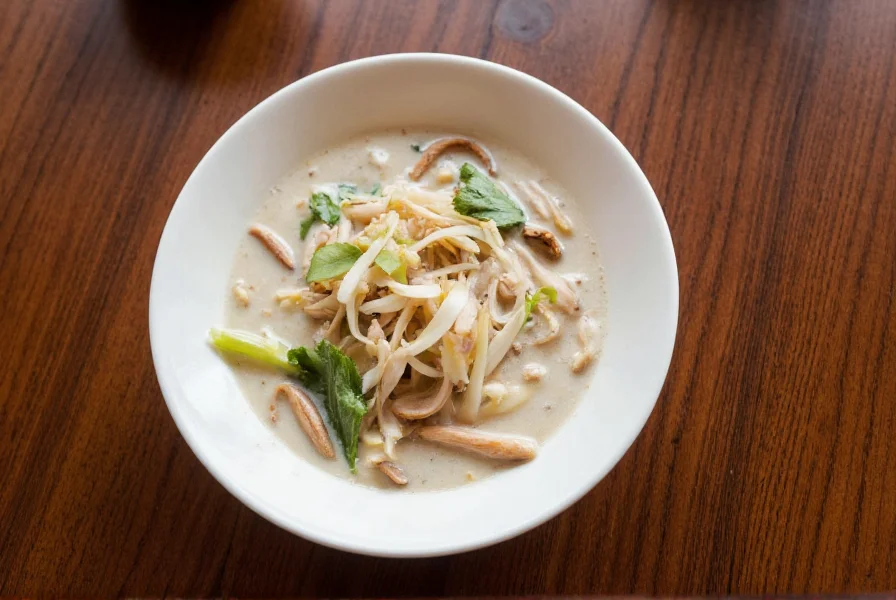Understanding the botanical and therapeutic distinctions between different rhizomes is essential for both culinary applications and potential health considerations. Greater galangal root has been used for centuries in traditional Southeast Asian medicine systems, particularly in Thailand, Indonesia, and Malaysia, where it's valued for more than just its distinctive flavor.
Botanical Classification and Physical Characteristics
Greater galangal (Alpinia galanga) belongs to the Zingiberaceae family, sharing this classification with ginger (Zingiber officinale) and lesser galangal (Alpinia officinarum). The plant grows up to 2 meters tall with long, linear leaves and produces white flowers with red streaks. The rhizome itself has a smoother, paler skin compared to ginger, with a distinctive bluish tinge when freshly cut—hence its nickname "blue ginger."
When comparing greater galangal root vs regular galangal, the key differences include:
| Characteristic | Greater Galangal (Alpinia galanga) | Lesser Galangal (Alpinia officinarum) |
|---|---|---|
| Size | Larger, cylindrical rhizomes (up to 20cm long) | Smaller, knobby rhizomes |
| Color | Pale brown with bluish interior | Reddish brown with yellow interior |
| Flavor Profile | Sharper, more peppery, with citrus notes | Sweeter, more floral, with mild heat |
| Primary Growing Regions | Thailand, Indonesia, Malaysia | China, Japan |
Historical and Traditional Uses
Greater galangal root has been documented in traditional medicine systems for over 1,000 years. In Ayurvedic medicine, it's known as "Rasna" and used for respiratory conditions and digestive issues. Traditional Chinese Medicine incorporates it as "Gao Liang Jiang" for warming the body and improving circulation.
Historical records from 13th century Europe show greater galangal was so valued it was sometimes used as currency. Medieval physicians prescribed it for digestive complaints and as a protective measure against the plague. In Southeast Asia, traditional healers have long used greater galangal root traditional medicine preparations for treating nausea, motion sickness, and inflammatory conditions.
Chemical Composition and Bioactive Compounds
The distinctive properties of greater galangal root stem from its unique chemical profile. Key compounds include:
- Galangin - A flavonoid with antioxidant properties
- Ethyl cinnamate - Provides the characteristic spicy aroma
- 1,8-cineole - Contributes to respiratory benefits
- Terpinene - Offers antimicrobial effects
- Galangalols - Unique compounds with potential anti-inflammatory effects
Research published in the Journal of Ethnopharmacology indicates that Alpinia galanga medicinal properties are more concentrated in the rhizome compared to other plant parts, with the highest concentration of bioactive compounds found in freshly harvested roots.

Evidence-Based Health Benefits
Modern research is beginning to validate many traditional uses of greater galangal root. Studies suggest potential benefits including:
Digestive Health Support
A 2022 review in Frontiers in Pharmacology noted that greater galangal root may help stimulate digestive enzymes and reduce nausea. Unlike ginger, which primarily affects the upper digestive tract, greater galangal appears to have broader effects throughout the digestive system.
Antimicrobial Properties
Research in the Journal of Applied Microbiology demonstrated that greater galangal root extracts show significant inhibitory effects against certain foodborne pathogens, including E. coli and Salmonella. This supports its traditional use as a food preservative in tropical climates.
Anti-Inflammatory Effects
A study published in Phytotherapy Research found that galangin, a key compound in greater galangal, may help reduce inflammation markers in laboratory settings. However, researchers caution that health benefits of greater galangal root observed in test tubes don't necessarily translate directly to human effects without further clinical trials.
Culinary Applications and Preparation
Greater galangal root is a staple in Southeast Asian cuisine, particularly in Thai tom kha gai (coconut soup) and Indonesian rendang. Its flavor profile differs significantly from ginger, being less sweet and more peppery with subtle citrus notes.
When working with fresh greater galangal root:
- Peel the tough outer skin with a spoon (like ginger)
- Use a microplane for fine grating in dressings
- Slice thinly for soups and broths (remove before serving as it remains fibrous)
- Dry and powder for spice blends (more concentrated flavor than fresh)
For those exploring how to use greater galangal root in cooking, note that it's typically used in smaller quantities than ginger due to its stronger flavor. In Thai cuisine, it's often paired with lemongrass and kaffir lime leaves to create complex flavor profiles.

Safety Considerations and Potential Interactions
Greater galangal root is generally recognized as safe when consumed in typical food amounts. However, those considering medicinal use should be aware of potential considerations:
- Pregnant women should consult healthcare providers before consuming medicinal amounts
- May interact with blood-thinning medications due to potential antiplatelet effects
- Those with gallstones should use caution as it may stimulate bile production
- Topical application may cause skin irritation in sensitive individuals
The European Medicines Agency considers greater galangal safe for culinary use but notes insufficient evidence for therapeutic dosing recommendations. As with any botanical, greater galangal root safety depends on appropriate usage and individual health circumstances.
Growing and Sourcing Greater Galangal
Greater galangal thrives in tropical climates with high humidity and partial shade. It can be grown in temperate regions as a container plant during summer months. When sourcing greater galangal root where to buy options, look for:
- Fresh rhizomes at Asian grocery stores (typically in the refrigerated section)
- Dried slices or powder at specialty spice shops
- Reputable online retailers specializing in botanical ingredients
Fresh greater galangal should feel firm with smooth skin. Avoid specimens with wrinkles, soft spots, or mold. Properly stored in a cool, dark place, fresh rhizomes can last 2-3 weeks; frozen slices maintain quality for several months.
Conclusion
Greater galangal root represents a fascinating botanical with distinctive characteristics that set it apart from related rhizomes like ginger and lesser galangal. Its unique flavor profile makes it indispensable in Southeast Asian cuisine, while emerging research continues to explore its potential health applications. Understanding the scientific name for greater galangal (Alpinia galanga) helps distinguish it from similar plants and ensures accurate identification when seeking this ingredient for culinary or research purposes. As with any botanical, appreciating both its traditional uses and modern scientific understanding provides the most comprehensive perspective on this remarkable plant.
Frequently Asked Questions
What is the difference between greater galangal and regular ginger?
Greater galangal (Alpinia galanga) has a sharper, more peppery flavor with citrus notes compared to ginger's sweeter, warmer profile. Botanically, they belong to different genera within the same family. Greater galangal contains higher concentrations of galangin and ethyl cinnamate, giving it distinct properties. The rhizomes differ visually—greater galangal has smoother skin and a bluish interior when cut, while ginger has knobby growths and yellow flesh.
Can I substitute greater galangal for ginger in recipes?
While possible, substitutions require adjustment. Greater galangal has a stronger, less sweet flavor than ginger, so use about half the amount when substituting. It works best in Southeast Asian dishes where its distinctive flavor is appropriate. For Western recipes designed for ginger, the substitution may alter the intended flavor profile significantly. In Thai cuisine, they're considered distinct ingredients with different culinary purposes.
Is greater galangal root safe for daily consumption?
Greater galangal root is generally safe when consumed in typical culinary amounts found in food. There's insufficient evidence to determine safety for long-term daily medicinal consumption. Most traditional uses involve intermittent rather than daily continuous use. As with any botanical, moderation is advised, and those with specific health conditions or taking medications should consult healthcare providers before regular medicinal use.
How should I store fresh greater galangal root?
Store fresh greater galangal root in a cool, dark place like a pantry for up to 2-3 weeks. For longer storage, wrap in paper towels and place in a perforated plastic bag in the refrigerator's vegetable drawer (up to 3 weeks). You can also slice and freeze it in an airtight container for several months. Dried slices or powder should be stored in an airtight container away from light and heat for up to 6 months.
What scientific evidence supports the health benefits of greater galangal root?
Research shows greater galangal contains bioactive compounds like galangin with antioxidant properties. Laboratory studies indicate potential antimicrobial and anti-inflammatory effects. A 2022 review in Frontiers in Pharmacology noted digestive benefits, while research in the Journal of Applied Microbiology demonstrated inhibitory effects against certain pathogens. However, most evidence comes from test tube or animal studies; high-quality human clinical trials are limited. Current science supports traditional uses as promising but not conclusively proven for specific health conditions.











 浙公网安备
33010002000092号
浙公网安备
33010002000092号 浙B2-20120091-4
浙B2-20120091-4